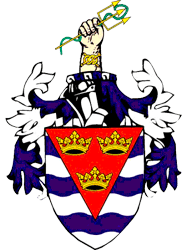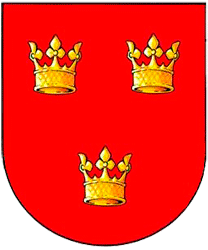|
|
|
|
<Ely Cathedral> <St Mary's (Parish) Church> <Cambrideshire - 1> <Home (Index) Page>
| Nave - North Aisle |
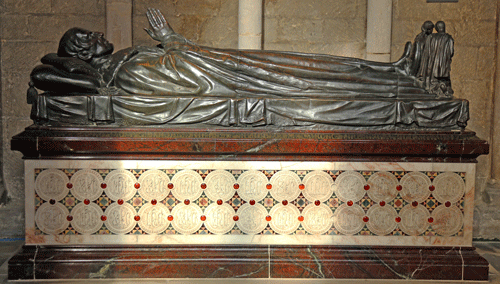 |
 Dr Hodge-Mill (1853) copper effigy (electro-plated) on tomb chest of alabaster and mosaic; designed by Sir G G Scott, executed by Philip. He taught in India and was later Professor of Hebrew at Cambridge; the figures at his feet represent an Indian and an English student. |
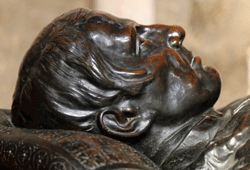 |
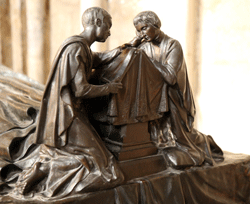 |
 Bishop Woodford (1885) by Bodley. He founded Ely Theological College |
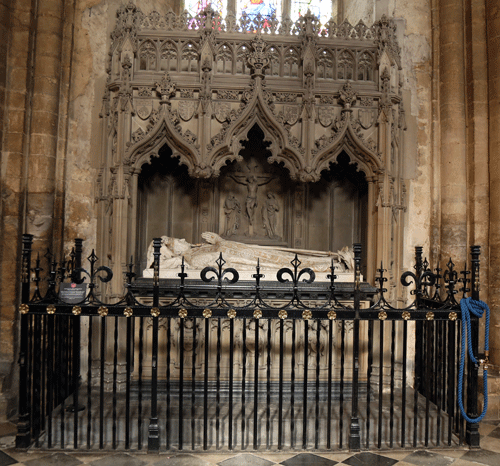 |
| Chancel - North Aisle |
 |
 |
 |
 |
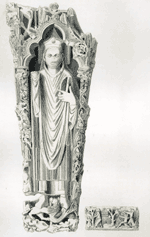 |
|
Bishop Nigellus (?) (1169)
Tounai marble coffin
shaped slap carved in very low relief which was found
below floor of St Mary's church in 1829. The bishop is
shown as a naked soul in a napkin held by a larger
angel. Above the head is incised:
St. Michael oret P[ro] Me.
and a carving
of the church he founded
|
Unknown
Bishop. Now headless, the effigy in higher relief than
the previous example and has a goose at
the feet. This effigy has been attributed, with little
evidence, to Hugh of Lincoln who is said to have owned a
pet goose!
|
Bishop Hugh of Northwold (1254) The three figures at the foot show the story of St Edmund. Also below top |
Bishop Kilkenny ( 1257) Purbeck marble effigy, flanked by columns carrying trefoil canopy, on tomb shaped slab; angels in the spandrels. Higher relief again. Also below centre |
Etching of Bishop Hugh's effigy |
 |
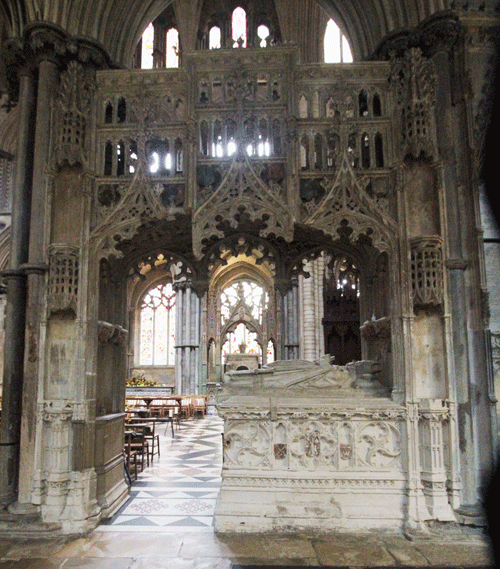 |
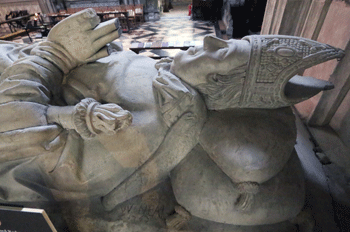 Far left bottom and above: Bishop Redman (1506) and left his tomb from the north chancel aisle |
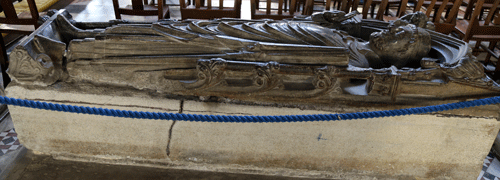 |
||
 |
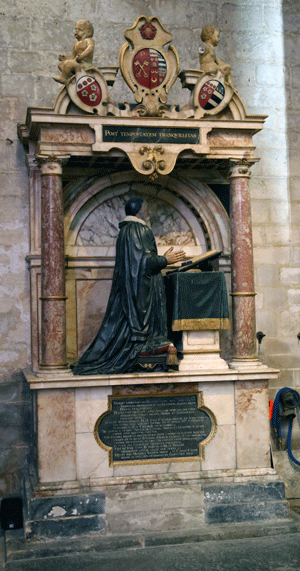 |
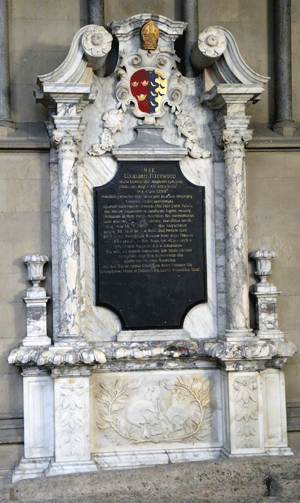 |
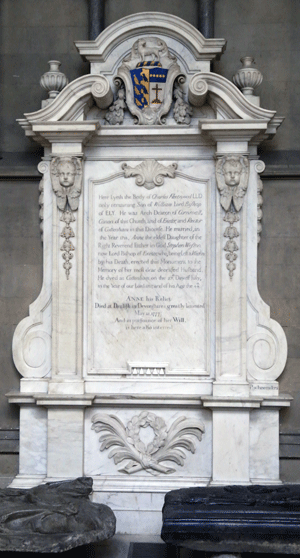 |
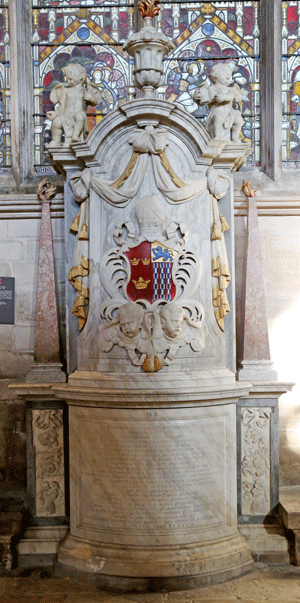 |
| Dean Caesar (1636) Painted alabaster | Bishop Fleetwood (1723) Signed by E Stanton & Co, Horsnaile |
Canon Fleetwood (1737)
by P Scheemakers |
Bishop Patrick (1707) . Signed by E Stanton. |
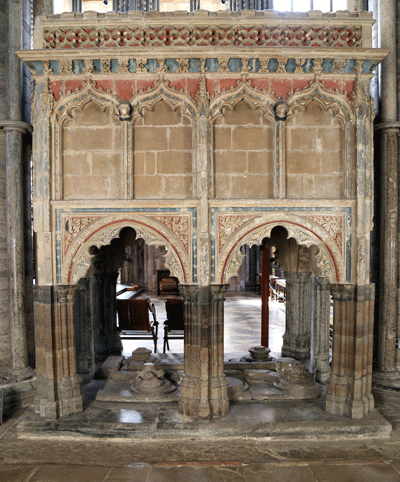 |
 |
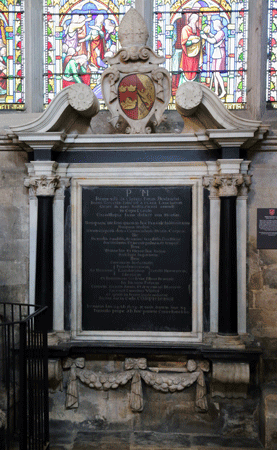 |
St Etheldreda's Shrine Remains of capitals below a superstructure which is said to be either a 14th century new casing of the shrine or perhaps the canopy part of Bishop's Hotham's monument . The ground stage of this has blank ogee arches |
Mathew Mawson (1770) | Bishop Laney (1675) Black and white marble. |
| Retrochoir |
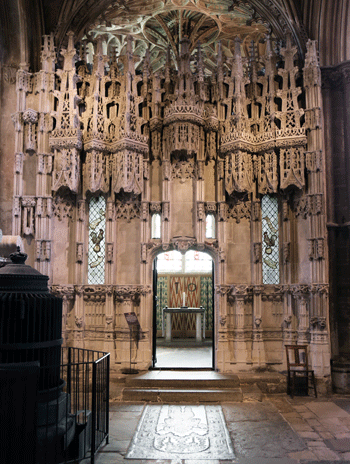 |
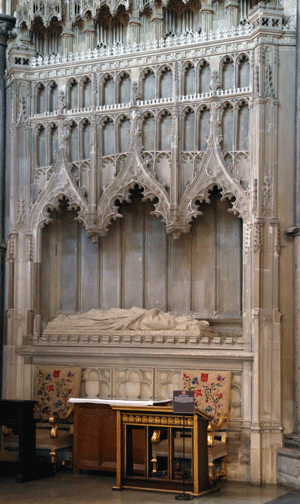
|
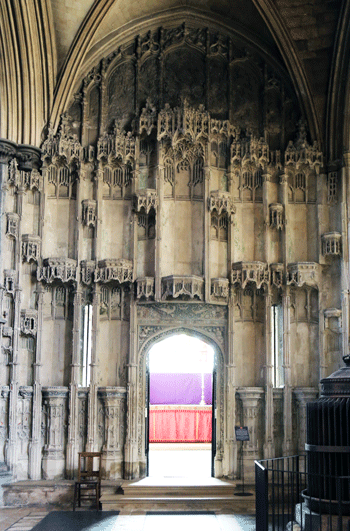 |
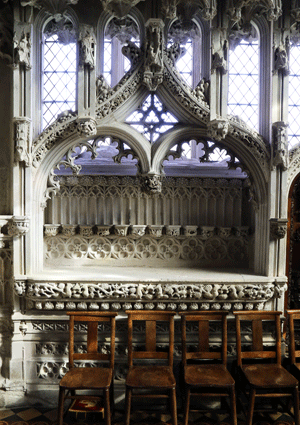 |
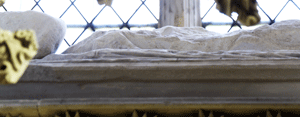  Left and above middle: Bishop Alcock's Chantry (1501) This was begun as early as 1488. The photographs show from above: i. entrance to the chapel, with the original wrought iron gates open. ii. Bishop Alcock's tomb. Above centre: Bishop Alcock's effigy. This is on the window sill and is obstructed from view by the superstructure of the tomb. It is in very poor condition Above top and bottom: Cardinal Luxembourg (1443) As archbishop of Rouen in Normandy he supported the Lancastrian regime in France. As the English hold on its French conquests weakened, he was given the see of Ely by Henry VI as reward for his services. |
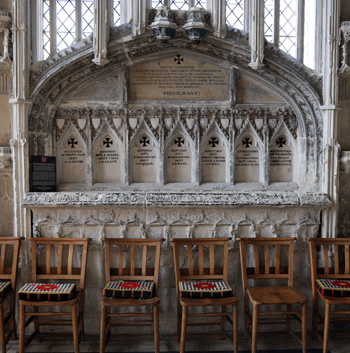 Above top: Bishop West's Chantry (1534) This too was begun early -1525-33. Again the chantry has wrought iron gates. Bishop West opposed the divorce of Henry VIII from Kathryn of Aragon and so fell from favour. Above bottom: Record of the reburial of several chests containing the bones of Anglo-Saxon bishops. See below There are two brasses to 19th century bishops set in the floor |
| The Anglo-Saxon bishops referred to above are: Wulstan (York), Osmund (Swedish), Alwin (Elmham), Ælfgar (Elmham), Ednorth (Dorchester-on-Thames) and Athelstan (Elmham). Also Brithnorth, Earl of Essex. |
| Chancel - South Aisle |
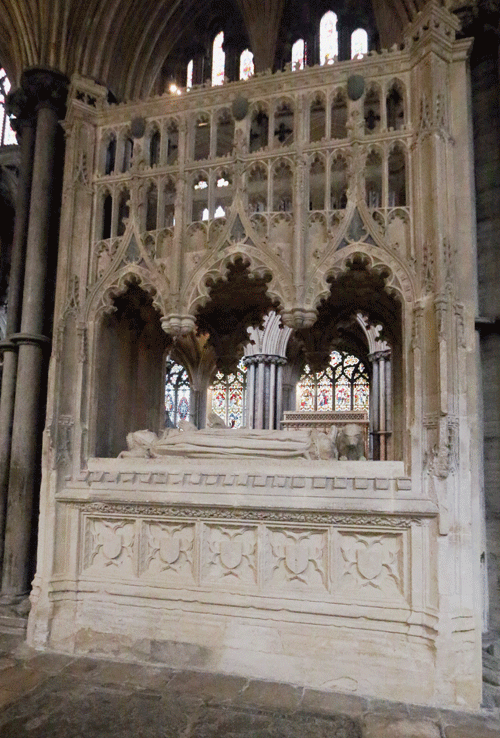 |
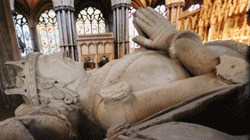

John Tiptoft, Earl of
Worcester (executed 1470), and Wives
Effigies
on tomb chest with quatrefoils with shields with canopy
|
 |
|
 |
| John Tiptoft, Earl of Worcester was a
cultured man who held several positions of high office. In
contrast he appeared to be a brutal man also, having introduced
impalement into England; he was consequently nicknamed
'The Butcher of England'. A
Yorkist, he was unable to escape with Edward IV when Henry VI
was temporarily restored to the throne by Richard Neville, the
'Kingmaker'. He was captured by the Lancastrians and executed in
the Tower of London. It is said that he asked the executioner to
decapitate him with three blows of the axe in honour of the
Trinity. He married first Cecily Neville, widow of Henry Beauchamp, Duke of Warwick (son of Richard Beauchamp, Earl of Warwick) and sister of Richard Neville, Earl of Warwick (The 'King Maker') who is buried with her first husband at Tewkesbury; second Elizabeth Greyndour and third Elizabeth Hopton. The two Elizabeths are the wives represented here. |
| However,
Mathew Ward in The tomb of 'The Butcher'? The
Tiptoft monument in the presbytery of Ely cathedral
(Journal of the Church Monuments Society Vol. XXVII, 2012) has
argued that the monument is that of the Earl's father, John Lord
Tiptoft (c.1378-14430) and his two wives, Joyce and Philippa.
The monument has been heavily restored over the years so it is
impossible to date it with any accuracy. There is no inscription
or heraldry on the monument, other than a small shield on the
helm showing the Tiptoft arms. Earl John was buried in
Black Friars, London following his execution in the Tower and
while the Ely monument may have been designed as a cenotaph or
his body may have been translated to Ely there is no record of
this. Earl John was a Yorkist and would not have worn the
Lancastrian collar of S's seen on the monument as well as earlier
renderings. However his father, Lord John, was long associated
with the chapter of Ely and was a confirmed
Lancastrian. The coronet, indicating an earldom, may well have
been added at one the restorations. There is however no way of knowing for certain to whom the tomb belongs. |
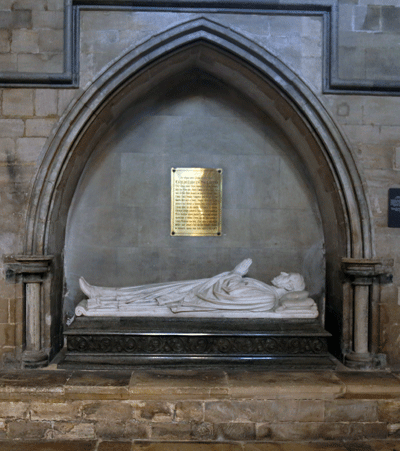 Canon Selwyn (1875) - of Selwyn College and Selwyn Divinity School in Cambridge. By T Nicholls (1879) |
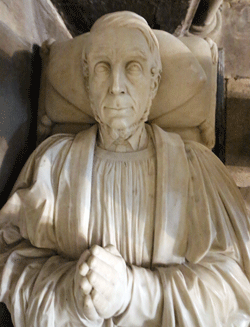 |
 |
 |
||
 |
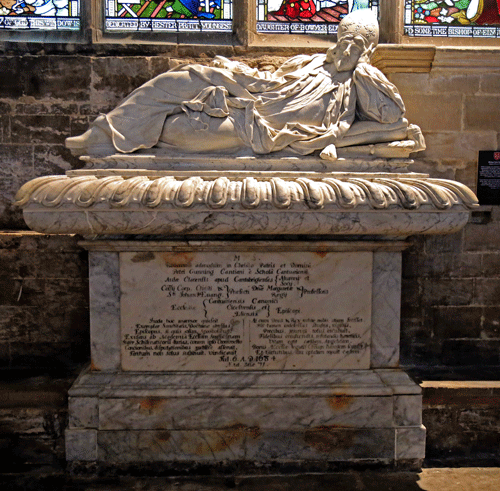
  |
 Top Row: Bishop Peter Gunning (1684). A semi-reclining effigy, head propped up by his hand, which rests on a tomb chest with no backing. His ledger stone is near the monument; shown reads: 'Peter, Bishop of Ely'. Bottom Left: Bishop Hotham (1337) tomb chest with arcades which were once filled with statuettes, only one of which survives. The effigy - now lost - was of alabaster. The former canopy may now be part of St Ethelreda's shrine (see above) Bottom Right: Bishop Barnett (1374) Plain tomb chest with two tiers of quatrefoils; brass lost from fragmented top. |
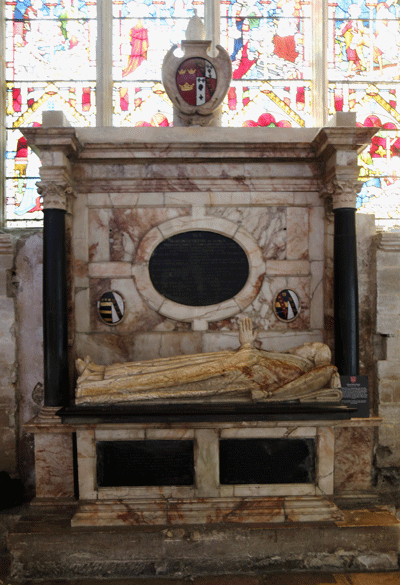 |
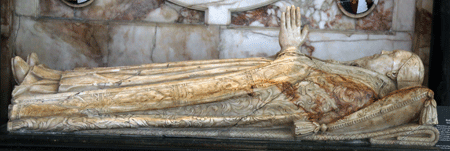 |
|
 |
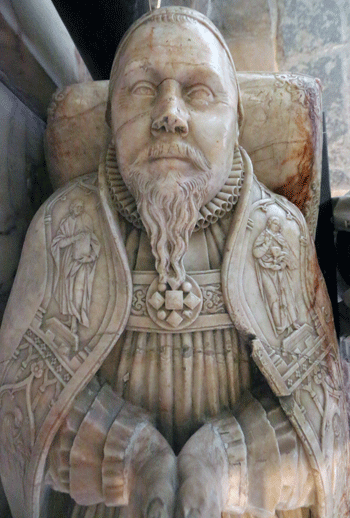 |
|
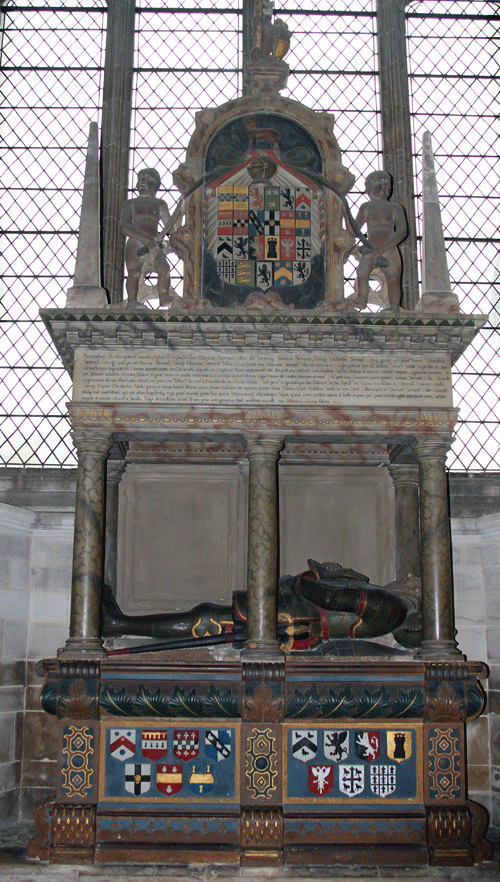 |
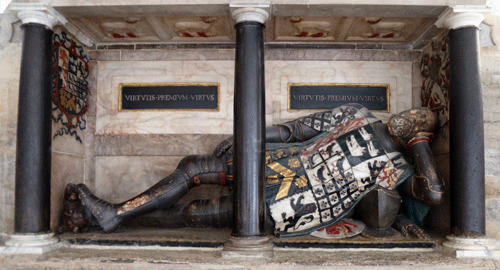 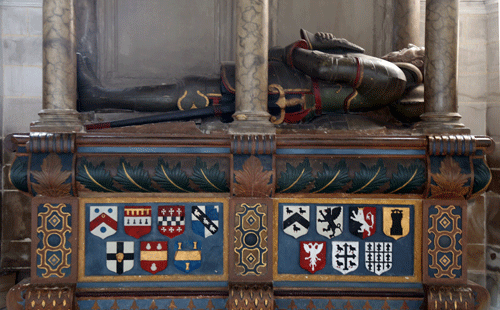
|

Far Left & Centre Bottom:
Sir Mark Steward (1603)
Above & Centre Top: Sir Robert Steward (1570) The heraldry and pedigree on the monuments of these two brothers are bogus and an ineffective attempt to show their descent from the royal house of Stuart |
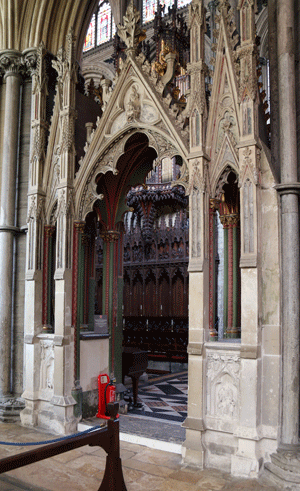 Above & Right: Bishop William de Luda (1298) There is no tomb chest and on the floor is a brass matrix of the Bishop |
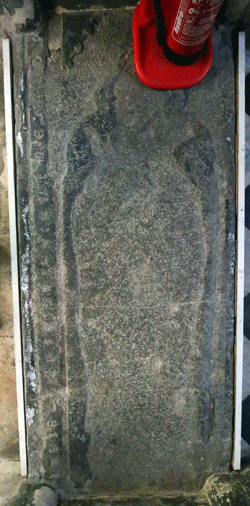 : :
You can walk under the canopy from the choir to the south aisle so please take care not to damage this matrix further. This passage is rather disrespectfully used as fire extinguisher point at the moment, the stand resting on the Bishop's mitre. |
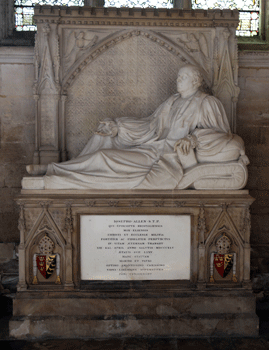 Right: Bishop Greene (1738) Above: Bishop Allen (1814) White marble effigy by I Ternouth Far Right: Bishop Moore (1714) |
 |
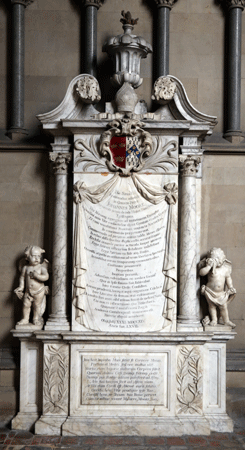 |
 |
 |
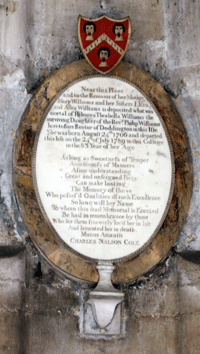 |
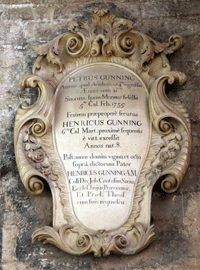 |
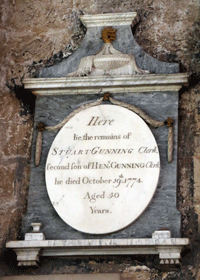 |
| Above from left to right: Canon Michael Glazebrook DD & Wife (both 1926); Bishop Butts (1748); Prebendary James Bentham (1771), who wrote a History of Ely | Harvey Goodwin (1891) Dean of Ely, later Bishop of Carlisle | Helenora Theabella Williams (1798) Also Mary (mother) & Eliza & Alice (sisters) | Peter Gunning (1735) Latin Text | Stuart Gunning (1774) Clerk |
| Floor Monuments |
| Brasses, brass
matrices, ledger stones etc. Others are shown in their correct
site |
| North Aisle | South Aisle | ||||
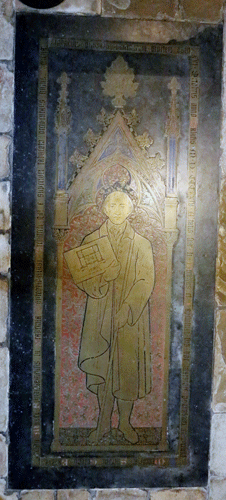 |
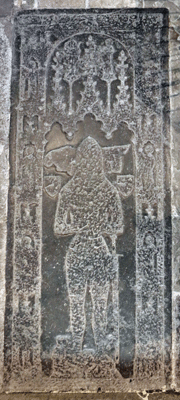 |
 |
 |
 |
 |
| George Basevi (1845) Architect who designed the FitzWilliam museum in Cambridge, shown with the tools of his profession. He was killed in a fall while inspecting the west tower of the cathedral | Sir William Thorpe (1393) | Priest or monk 15th C | A priest c. 1430 | Bishop Thomas Goodrich (1554) He followed Bishop West and assisted Henry VIII in his divorce. He decreed in 1541 that images, relics, shrines and table monuments were to be 'totally demolished and obliterated' | Dean Umphry Tyndall (1614) |
| More Matrices in the South Aisles | ||||
 |
 |
 |
 |
 |
| A monk 15th C | A monk. 15th C | A priest 15th C | A monk 15th C | Priest or monk 15th C |
| Bishop West's Chantry | Chancel | Nave |
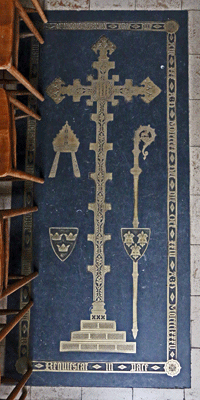 Bishop James Russel Woodford (1885) Engr by Barkentin & Krall |
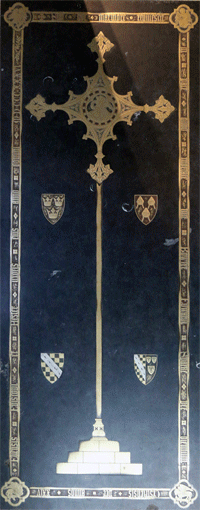 Bishop Boyer Edward Sparke & wife Hester (1836) Engr. 1836, laid 1886 |
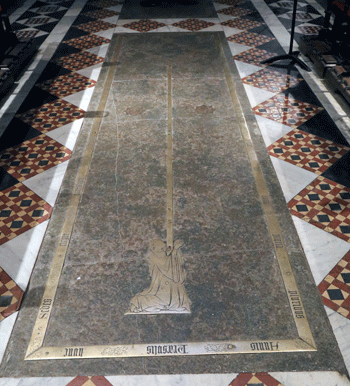
In the foreground: Prior
John Crauden
(1341)
In the background: Bishop John Hotham (1337)There is also a tomb chest said to be his in the south aisle. Only a part can be shown as this is covered by a hefty lectern, another example of the cathedral authorities' insensitivity. See below |
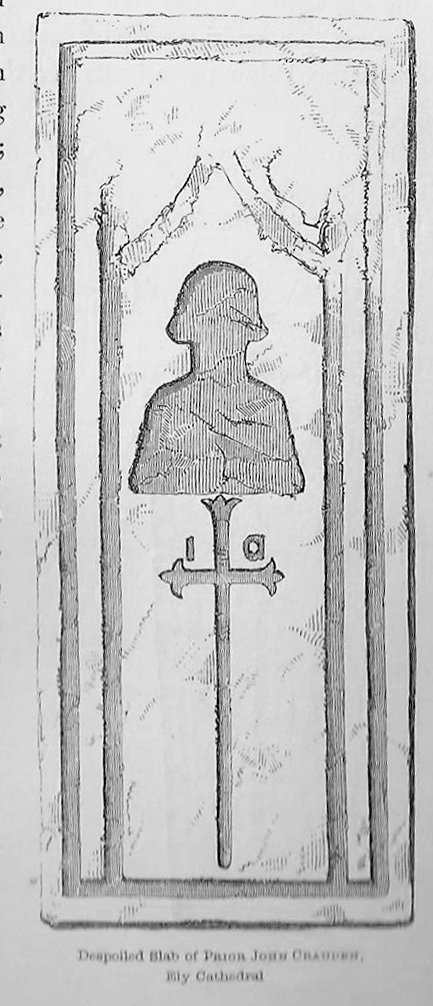 Drawing of matrix of the brass of Prior Crauden. As can be seen the replacement brass bears no resemblance to how the original looked. |
.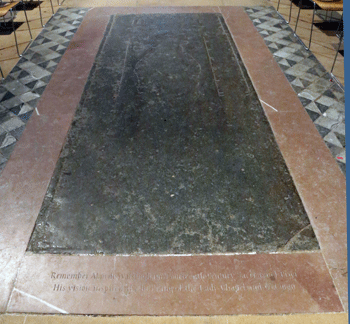 Brass matrix said to be that of Alan of Walsingham (1364) He was a monk at Ely and an architect, responsible for building the octagon. He was in due course elected prior and bishop but this latter office was overruled by the pope |
| The brass to Bishop Hotham consists of a marginal inscription and two shields. Both this brass and that to Prior Crauden are renewals deaigned by Pugin and engraved by Hardman & Co of Birmingham in 1852 |
|
The Cloisters |
| The cloisters in Ely cathedral have mostly been destroyed: only a corner remains, which is accessible from the church |

Above then left to right:
Twyford Woodham
(1772) surgeon & Barbara (1798) ;
William Pickering
& Richard Edger (1845) both killed in accident from
Norwich to Ely. Poem 'The Spiritual Railway' appears on the
slab; Humphrey Smith (1743), designed by
John Sanderson, carved by Charles Stanley.
In south porch leading to the cloister; Tomb arch but no
information.
|
 |
 |
 |
| Outside | ||
| These four monuments, dating from the 18th century, are affixed to the outside west wall of the Lady Chapel high up. The larger two, at least, look like they may have been once inside the cathedral and have been ejected at some time. I have not discovered any explanation for this. | ||
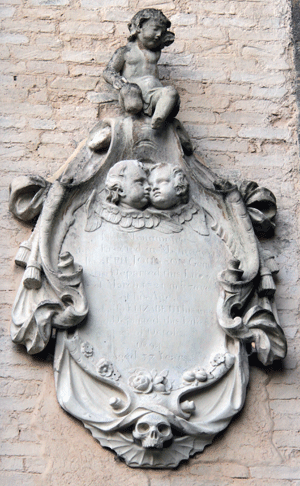 |
 |
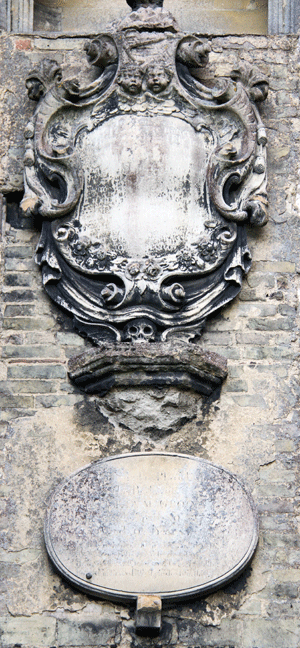 |
| Left:
Joseph
Johnson (1729) aged 70 and his wife
Elizabeth (1604) aged 37. The incised
lettering can be made out even though any infill has been lost. Above: John Ellbon (177-) Cathedral organist. Right: On the top cartouche I can only make out the date 1765. On the bottom oval tablet I can only make out possibly William Groom (177-) |
||
 |
St Mary's |
| St Mary's is the parish church of Ely. Park in the free car park as for the cathedral. When I arrived, without an appointment, the west and north doors were both locked; however around the 'back' of the church there is a corridor linking the parish office to the south door of the church. This corridor had an unlocked door and access to the parish office where the administrator kindly opened the door for me. |
 |
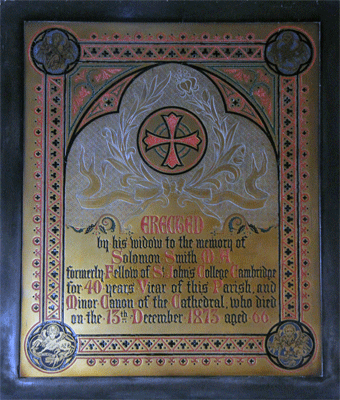 |
 |
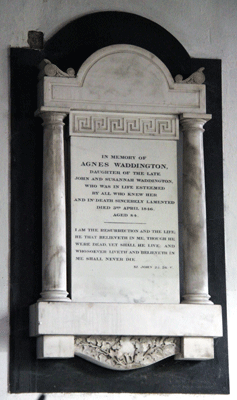 |
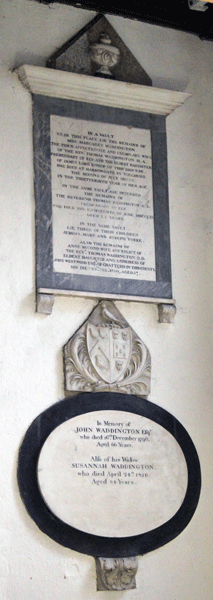 |
| Above from Left to Right:
1. John Harlock (1791) & Sarah (1788). 2. Solomon Smith (1873)
Forty
years Vicar of Ely & Minor Canon of the Cathedral.
3. Robert Rayner (1784), his
wife, Susanna (1791) and their daughter
Mary (1779). 4. Agnes Waddington (1846) Signed:
M W Johnson, New Road, London (difficult to make out) Far Right ,Upper Tablet : Mrs Margaret Waddington (1800) She was the daughter of the Bishop of Ely and wife of Rev Thomas Waddington DD (1815) Prebendary of Ely. Also three of their children: Jemima, Mary and Joseph Yorke. Also Anne (1830) second wife of Rev Thomas Waddington. Between this an the lower tablet are arms which appears to relate to then both. Lower Tablet: John Waddington (1796) and his wife, Susannah (1816) |
||||
 |
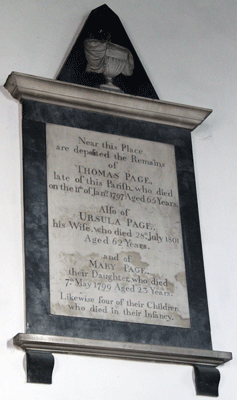 |
 |
 |
| Thomas Page (1813) and his wife Sarah (1814) Also, Thomas & William, children who died in infancy. | Thomas Page (1797) and his wife Ursula (1801); 'Likewise four of their Children who died in their Infancy' | Thomas Austin AM (1722) 'formerly of Sid: Suſ: Coll: Camb.' Also his daughter Sarah (n/d) and wife Mary (1703) aged 19 (or is this date of Sarah) . Their son, Thomas (1740) There is then a lengthy section about Thomas the Younger, who seemed to pursue a life of leisure and of a benefactor, after academic qualifications. On the base is added Mrs Mary Austin (1747) 'Relict and Mother of the above Mr Austin[s].' | Sarah Martin (1795) and daughter Rebecca (1798) age 6 |
| Other Wall Monuments |
| The first two are almost identical and set
side by side; the third is set below. Black and white. Anne Martin (1808) Wife of Robert Martin, below. And three of their children who died in infancy. Robert Martin (1834) Signed: Pearson, Ely Robert Martin (1849) Probably the son of the above. Numerals are Arabic whereas those on the above are Roman. Samuel Wells (1849) Barrister-at-Law; and his wife Sarah Ann (1847) Horace Easingwood (1960) Chorister for 64 years. All black tablet Jonathan Page (1840) Black and white tablet. James Dench (1852) Black and white tablet. Charles Theodore Harlock (1865) 'accidentally drowned at Ely' White scroll on black background Anne ___ of Rev John Griffith. Rev John Griffith DD. Tablet partly obscured by a large chest Aungier Gotobed (1804) 'a native of this town.' White oval tablet Jane Leach (183_) Tablet partly obscured by the large chest Emma Leach (1876) White tablet William Layton (1821) and his wife Mary (1864) Black and white. |

